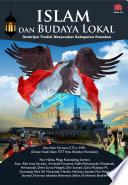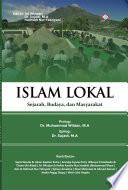
Pemasaran Digital dan Perilaku Konsumen
Di era digital seperti saat ini, tren pemasaran berkembang seiring dengan perubahan teknologi yang semakin canggih. Pemasaran digital hadir sebagai suatu inovasi baru di mana proses pemasaran suatu produk atau jasa dapat dilakukan melalui digital maupun internet. Berkembangnya era digital mengubah cara hidup dan cara belanja masyarakat modern. Kebiasaan berbelanja secara tradisional yang umumnya dilakukan melalui proses pertemuan secara langsung antara pembeli dan penjual, kini telah berubah menjadi cara berbelanja online. Hal ini turut merubah perilaku konsumen dan membuat proses belanja semakin mudah. Beragam teknologi yang mengubah perilaku konsumen, mulai dari bagaimana mereka menerima informasi, mengevaluasi pilihan, sampai pada keputusan membeli. Kemudahan akses informasi menyebabkan konsumen menginginkan informasi mengenai suatu produk secara transparan, di mana mereka mampu mengidentifikasi suatu brand yang dapat dipercaya dan menimbulkan ketertarikan maupun niat beli. Buku ini secara lengkap membahas : Bab 1 Pengantar Pemasaran Digital Bab 2 Perilaku Konsumen (Persepsi, Motivasi dan Karakteristik) Bab 3 Perilaku dan Demografi Konsumen Bab 4 Simbolisme dan Budaya Merek Bab 5 E-Consumer Bab 6 e-WOM Bab 7 Online Marketplace Bab 8 Media Sosial dan Keterlibatan Konsumen Bab 9 Komunikasi Pemasaran Menggunakan Saluran Digital Marketing Bab 10 Pelayanan dan Hubungan Pemasaran Digital
- ISBN 13 : 623651299X
- ISBN 10 : 9786236512999
- Judul : Pemasaran Digital dan Perilaku Konsumen
- Pengarang : Astri Rumondang, Acai Sudirman, Samsider Sitorus, Aditya Halim Perdana Kusuma, Melda Manuhutu, Andriasan Sudarso, Janner Simarmata, Dian Hasdiana, Tasnim Tasnim, Nina Fapari Arif, Acai Sudirman, Samsider Sitorus, Aditya Halim Perdana Kusuma, Melda Manuhutu, Andriasan Sudarso, Janner Simarmata, Dian Hasdiana, Tasnim Tasnim, Nina Fapari Arif, Acai Sudirman, Samsider Sitorus, Aditya Halim Perdana Kusuma, Melda Manuhutu, Andriasan Sudarso, Janner Simarmata, Dian Hasdiana, Tasnim Tasnim, Nina Fapari Arif,
- Kategori : Antiques & Collectibles
- Penerbit : Yayasan Kita Menulis
- Bahasa : id
- Tahun : 2020
- Halaman : 190
- Google Book : https://play.google.com/store/books/details?id=WW_6DwAAQBAJ&source=gbs_api
-
Ketersediaan :
008388 Tersedia di Library of UI BBC
Menurut Schiffman dan Kanuk Perilaku konsumen adalah suatu proses yang dilalui oleh seorang pembeli dalam mencari, membeli, menggunakan, mengevaluasi serta bertindak pada konsumsi produk dan jasa, maupun ide yang diharapkan dapat ...









